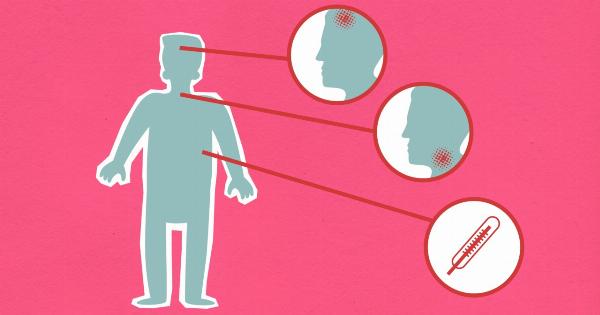Dancing is not only a fun and enjoyable activity, but it also offers numerous health benefits. One of the key advantages of dancing is the positive impact it has on the cardiovascular system.
Regular dancing can significantly improve cardiovascular health, leading to a stronger heart and a reduced risk of heart disease. Let’s explore the various ways in which dancing benefits our cardiovascular system.
1. Improved Heart Health
Dancing is a great form of aerobic exercise that gets your heart pumping. When you engage in dance, your heart rate increases, and your cardiovascular system works harder to meet the increased demand for oxygen-rich blood.
This continuous movement strengthens your heart muscles, improving their efficiency and lowering your resting heart rate over time. By making dance a regular part of your routine, you can enhance your heart health and reduce the risk of cardiovascular diseases.
2. Increased Stamina
Dancing involves repetitive movements and continuous physical exertion, which helps to build stamina. Regular dancing improves your endurance levels, as it requires sustained cardiovascular activity for an extended period.
By increasing your stamina, dancing enables you to perform other physical activities for more extended periods without getting tired quickly, making it easier to engage in other cardiovascular exercises such as running, swimming, or cycling.
3. Lower Blood Pressure
Elevated blood pressure is a significant risk factor for heart disease. Consistently high blood pressure forces your heart to work harder, leading to increased strain on your cardiovascular system.
Dancing has been shown to help lower blood pressure levels by improving overall cardiovascular health. The combination of aerobic exercise and the overall enjoyment of dancing reduces stress and promotes relaxation, which can lead to a decrease in blood pressure levels.
4. Weight Management
Dancing is a highly effective calorie-burning activity. Depending on the intensity and style of dance, you can burn a significant number of calories while having fun.
Regular dance sessions can help you maintain a healthy weight or support weight loss efforts, which is crucial for cardiovascular health. By reducing body weight or maintaining a healthy BMI, you can reduce the strain on your heart and improve overall cardiovascular function.
5. Improved Blood Circulation
Regular dance practice helps improve blood circulation throughout the body. As you engage in dance movements, your muscles contract and relax, promoting the smooth flow of blood to all parts of your body.
Good blood circulation ensures that oxygen and nutrients are efficiently transported to your organs and tissues. Improved circulation also aids in the removal of waste products from your body, keeping your cardiovascular system healthy and reducing the risk of conditions such as clot formation and deep vein thrombosis.
6. Reduced Risk of Stroke
Stroke occurs when there is a disruption of blood flow to the brain, leading to damage or cell death. Regular dancing has been shown to reduce the risk of stroke by improving overall cardiovascular health.
A strong heart and good blood circulation, as achieved through dancing, ensure that your brain receives a sufficient oxygen supply, reducing the chances of a stroke occurring. Additionally, the mental and cognitive aspects of dancing help maintain brain function and reduce the risk of cognitive decline associated with stroke.
7. Stress Reduction
Chronic stress can have detrimental effects on your cardiovascular health. Dancing offers an excellent outlet for stress relief.
The combination of physical exertion, rhythmic movements, and the enjoyment of dancing can trigger the release of endorphins, which are natural stress reducers. By engaging in regular dance sessions, you can lower your stress levels and improve your cardiovascular health.
8. Stronger Respiratory System
Dancing requires controlled breathing and sustained movement, which can strengthen your respiratory system. As you dance, your lungs are continuously working to provide oxygen to your muscles, ensuring an adequate oxygen supply throughout your body.
Over time, regular dancing increases lung capacity, making your respiratory system more efficient. By improving your breathing function, dancing can reduce the risk of respiratory diseases and enhance overall cardiovascular health.
9. Improved Cholesterol Profile
High cholesterol levels can contribute to the development of cardiovascular disease.
Dancing has been shown to improve cholesterol profiles by increasing levels of high-density lipoprotein (HDL) cholesterol, often referred to as “good” cholesterol. HDL cholesterol helps remove low-density lipoprotein (LDL) cholesterol, or “bad” cholesterol, from your arteries, reducing the risk of arterial blockages and heart disease.
By participating in regular dance sessions, you can positively impact your cholesterol levels and improve your cardiovascular health.
10. Enhanced Mental Health
While not directly related to cardiovascular health, mental well-being is closely linked to overall health. Dancing can have a significant positive impact on mental health, reducing the risk of depression, anxiety, and stress-related conditions.
Psychological well-being plays a crucial role in cardiovascular health, with positive mental health being associated with a lower risk of heart disease and improved cardiovascular outcomes.
Conclusion
Dancing offers numerous cardiovascular benefits that go beyond mere enjoyment and recreation.
By incorporating regular dance sessions into your routine, you can improve heart health, increase stamina, lower blood pressure, manage weight, enhance blood circulation, reduce the risk of stroke, relieve stress, strengthen your respiratory system, improve cholesterol profiles, and promote mental well-being. So, put on your dancing shoes and start reaping the many cardiovascular benefits that dancing has to offer!.































